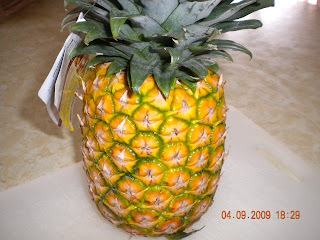
Roast Beef in Lettuce Cups
Some restaurants call this Lettuce Wrap where
they bring everything to your table
and you have to assemble them yourself.
I saw Rachel Ray made this in her show and she called it
Lettuce Cups.
I think I like the sound of that better.
Whatever you call it, this is an excellent idea to have a healthy sandwich specially
when you have been over eating carbs like I have.
With the left over roast beef from Easter sitting in the freezer,
I prepared this meal in a less than 30 minutes.

You can put anything you like in your fajitas, but the basic ingredients
are lettuce, onions, red and green peppers, steak or chicken
or a combination of steak and chicken.
 The Meat Fillings
The Meat FillingsThaw out the roast beef if it has been frozen,
then slice the meat into strips. Set aside.
Heat some olive oil in a skillet over medium heat.
Add the sliced onion and saute until they are wilted.
Add in the roast beef, sliced green peppers and sliced red bell peppers.
Season with salt and pepper.
Saute this mixture for about 8 minutes and
you have a fabulous meat filling for fajitas.

You can customized your fajitas by putting some
guacamole, shredded cheese, tomatoes or salsa
on top of the meat fillings.
I like my fajitas simple....
I made it by spreading some mayo on the lettuce,
put some meat mixture on the lettuce and
topped it with slices of avocado.

Rolled it up and secured the lettuce with a toothpick.
Simple but really delicious!!
*****
My husband prefers his fajitas with flour tortillas

Heat up the tortilla in the microwave for about 1 minute
and spread some mayo on it.
Line a piece of lettuce on the tortilla
and put some of the meat fillings on it.

Roll up the tortillas and secure them with toothpicks.
My husband prefers his with just meat fillings...nothing else.
no cheese, no avocados, no tomatoes.
Whatever makes him happy!!!
 Potatoes 'N Cream
Potatoes 'N Cream Ingredients:
Ingredients:
















































